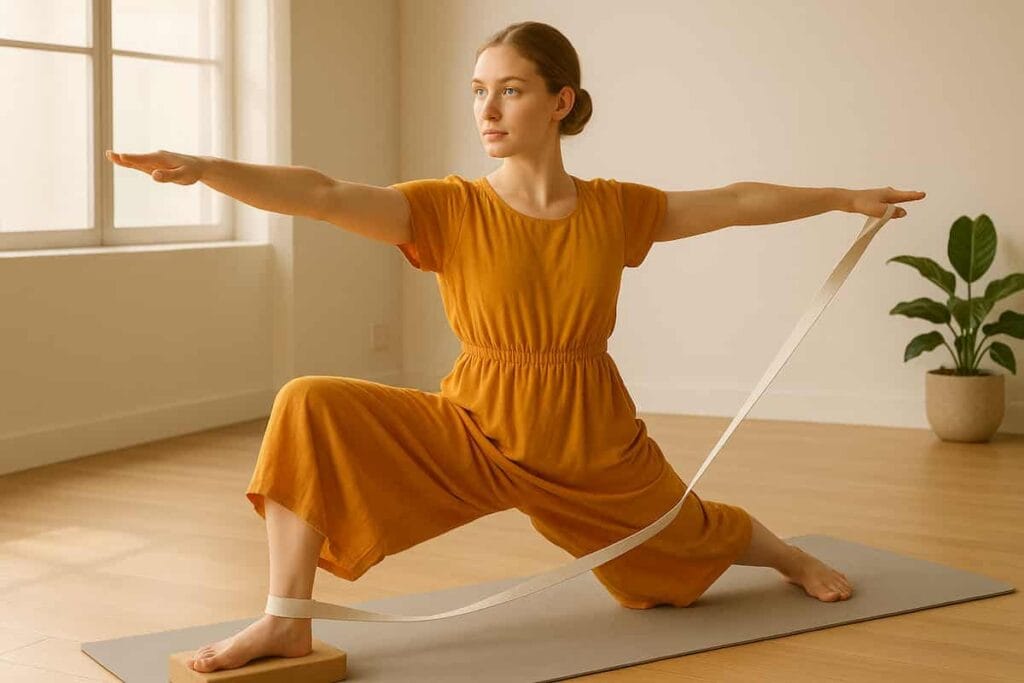
If you like yoga that moves slowly but works deeply, Iyengar Yoga could be your new best friend. Think of it as the “slow and steady wins the race” style—no wild flows, just careful, strong poses where every muscle gets attention. Why? Because its founder, B.K.S. Iyengar, believed alignment is everything (and let’s be real, most of us stand like question marks anyway). Best part? It’s perfect if you’re stiff, healing, or just tired of guessing if your “downward dog” looks more like a “confused cat.” So grab a mat, maybe a block or two, and get ready to stand tall—finally!
What is Iyengar Yoga?
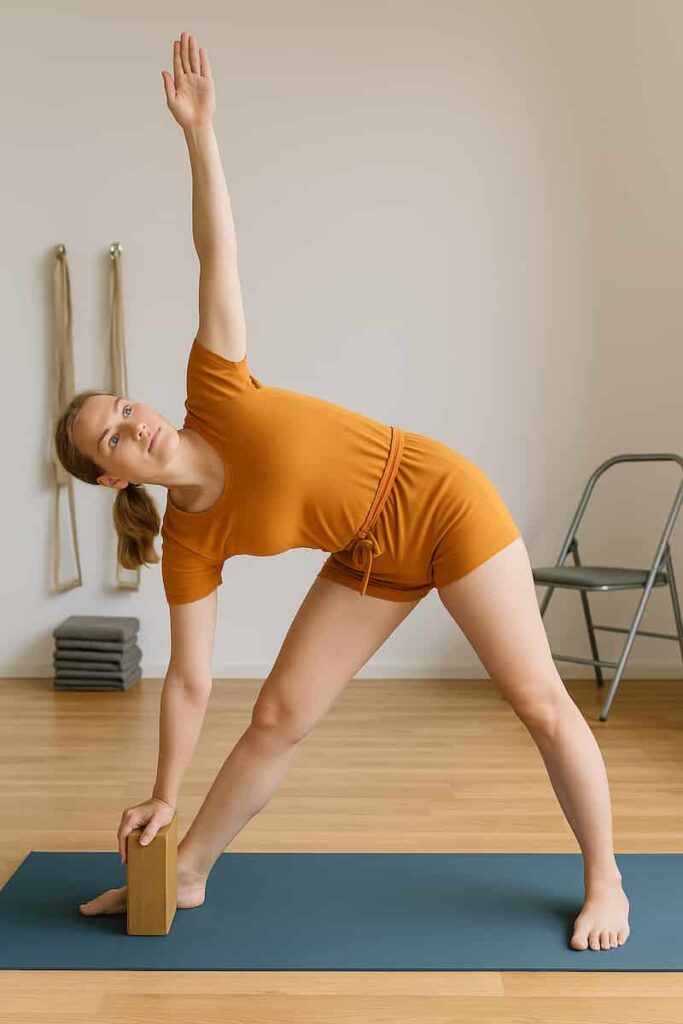
Picture this: yoga where speed doesn’t matter, but getting it right does—that’s Iyengar Yoga in a nutshell. Dreamed up by B.K.S. Iyengar (a man so precise, he probably alphabetized his spice rack), this style is less about flashy poses and more about doing them properly.
Here’s what makes it special:
- Alignment: Your body isn’t a noodle—it’s architecture. Shoulders stacked, hips level, no more standing like a sleepy flamingo.
- Precision: If regular yoga is jazz, this is classical music. Every finger, foot, and femur has a very specific job to do.
- Order matters: Poses build on each other like LEGOs—you don’t put the roof on before the walls, right?
The game-changer? Props! Blocks, straps, even folded blankets turn “I can’t possibly…” into “Oh, that’s how this works!” Perfect for stiff dads, injury recoverers, or anyone who’s ever whispered “my hips don’t do that” in a regular class.
Bottom line? If you like instructions clearer than your grandma’s cooking recipes, Iyengar Yoga’s your match. And don’t worry—no one expects you to fold like a pretzel on day one. (That’s what the straps are for!)
What Are the Benefits of Iyengar Yoga?
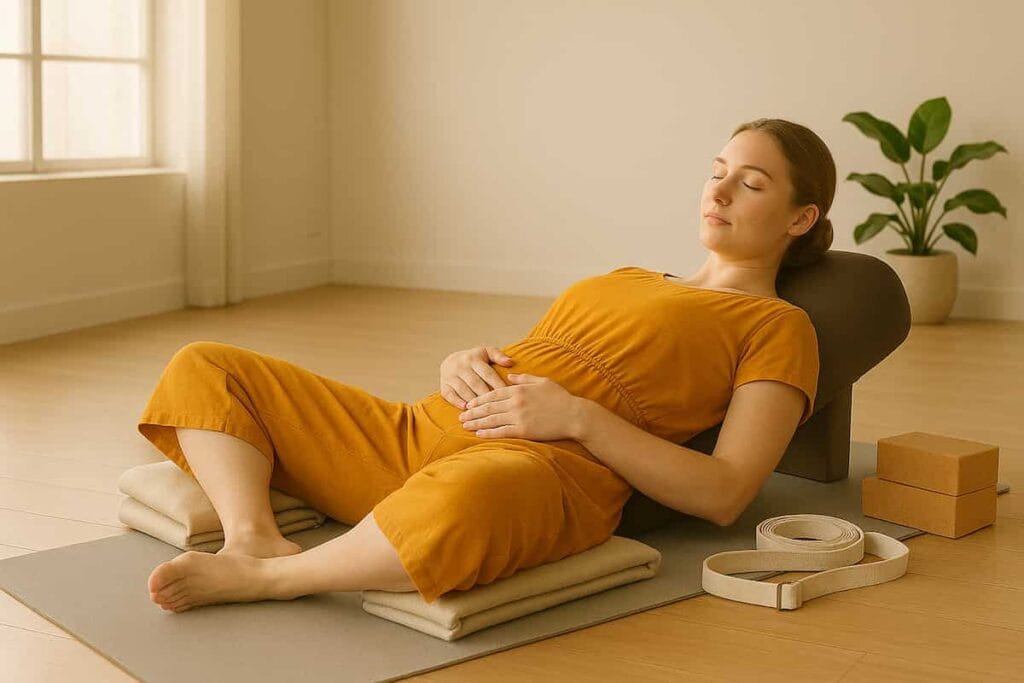
Think of Iyengar Yoga like a personal trainer for your whole being – it doesn’t just stretch you, it upgrades you. Here’s what regular practice can do:
- Stand Taller (Finally!): Ditch the “office hunch” for good. That military posture focus means you’ll sit, stand, and walk like someone just whispered “royalty incoming.”
- Get Stronger – Without the Gym Grunt: Holding poses properly turns your muscles into steel (okay, firm tofu at first). Bonus: No dumbbells required, just gravity and your own stubborn limbs.
- Pain? Meet Your Match: Achy back? Stiff hips? This style is famous for rehab. Props + precision = your body sighing “ohhh, THAT’S how I’m supposed to move.”
- Brain Gains Too: When every pinky toe has a job in a pose, you can’t zone out. Goodbye stress, hello “wait, was I always this clumsy?” moments.
Best part? It works whether you’re a marathon runner or someone who considers reaching for the remote daily cardio. No competition, no ego – just you, your mat, and maybe a well-placed block to save dignity.
Your Crucial Iyengar Yoga Equipment
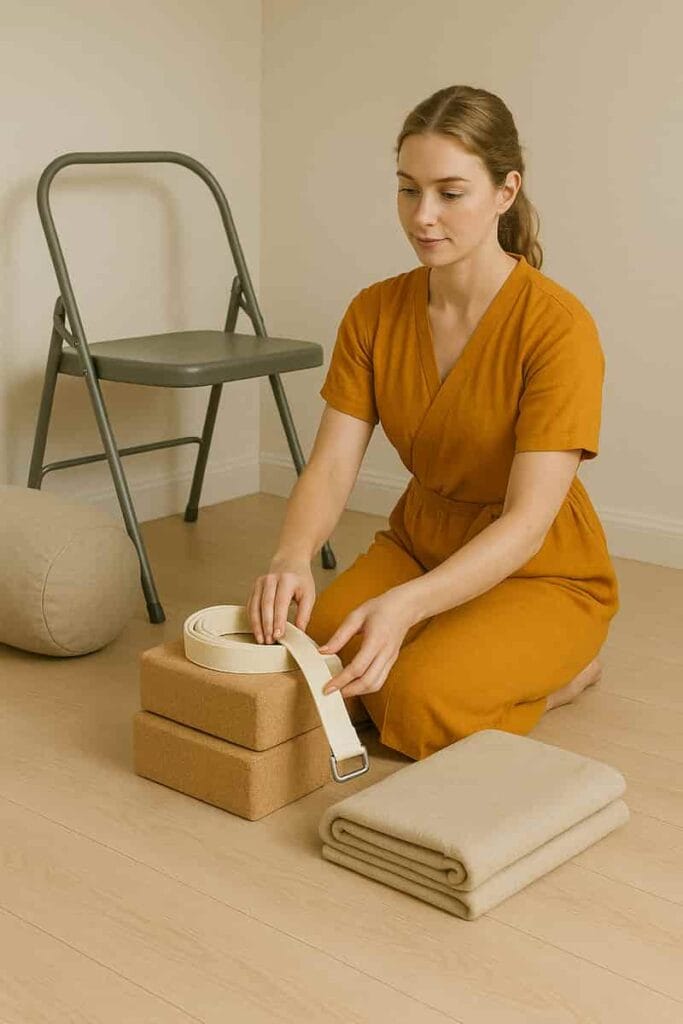
Let’s be real – most of us aren’t born rubber-band flexible. That’s why Iyengar Yoga cheerfully uses props – think of them as your personal yoga pit crew. Here’s the dream team:
- Yoga Blocks: The “I swear I’ll reach the floor someday” boost. Perfect when your hands and the mat are in a long-distance relationship.
- Straps: For when your hamstrings say “absolutely not” to that forward fold. Like giving your limbs a polite leash.
- Blankets: Fold ’em for cushion, drape ’em for coziness. Because sitting on hardwood floors shouldn’t feel like medieval torture.
- Bolsters: The “nap time for yogis” essential. Great for restorative poses where the goal is maximum chill.
- Chairs & Walls: Not just for sitting or leaning! Turn them into balance buddies for poses that usually make you wobble like a newborn giraffe.
🛒 Explore on Amazon the essential Iyengar Yoga props that bring comfort, alignment, and support to every pose.
The magic? These props don’t cheat – they teach. Whether you’re stiff as a board or bouncing back from injury, they meet you where you’re at. No shame, just smart support. (And hey, even seasoned yogis use them – so you’re in fancy company.)
Iyengar Yoga Poses: Where Props Save the Day
Think of Iyengar Yoga poses like a choose-your-own-adventure book—everyone gets to the same ending, just with different help along the way. Here’s the lineup (prop squad included!):
- Tadasana (Mountain Pose): The “how hard can standing be?” wake-up call. Spoiler: Very. Blocks under your hands teach your spine to stack like carefully balanced pancakes.
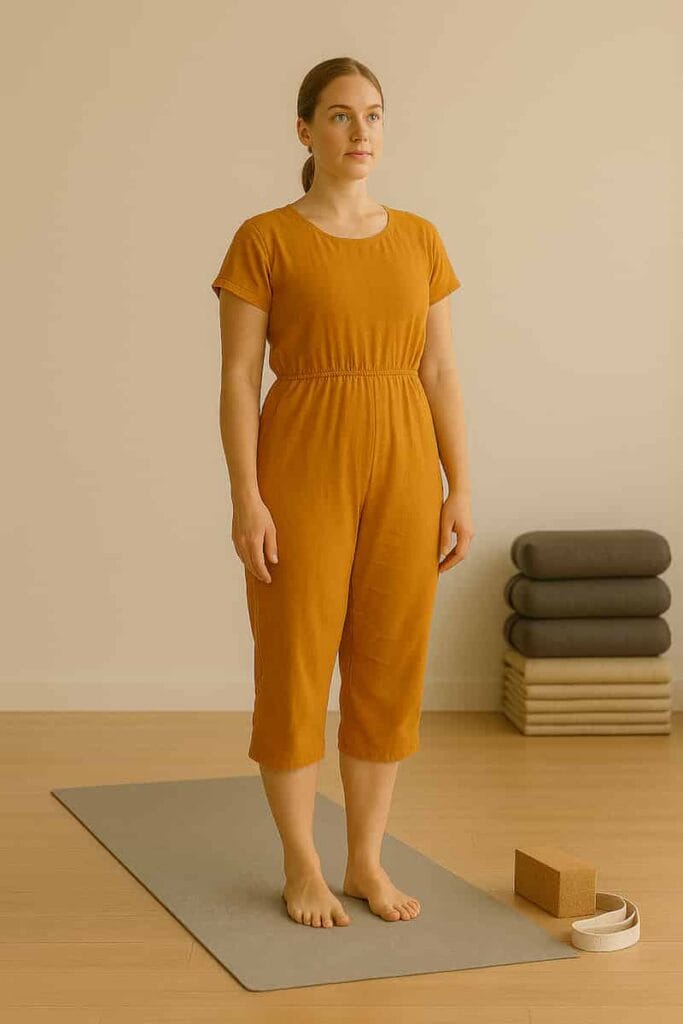
- Trikonasana (Triangle Pose): That moment you realize “my hips don’t swivel like that.” Enter the block—your personal hip-translator—making this twisty pose actually possible.
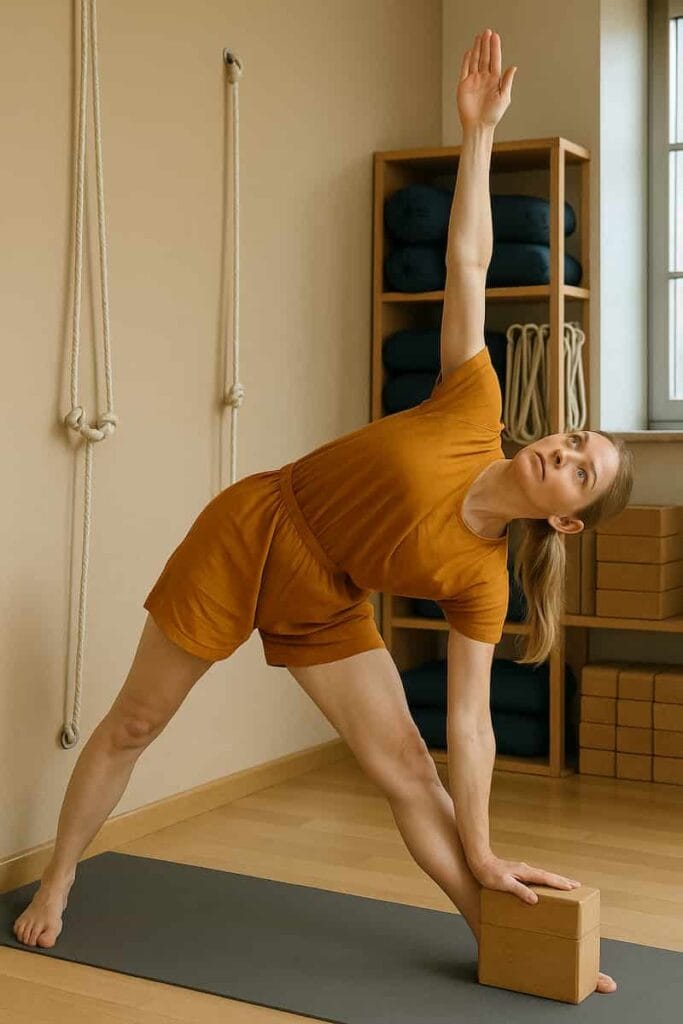
- Virabhadrasana II (Warrior II): Where you finally understand why your thighs are screaming. A chair nearby = your “I’m still majestic but taking breathers” option.
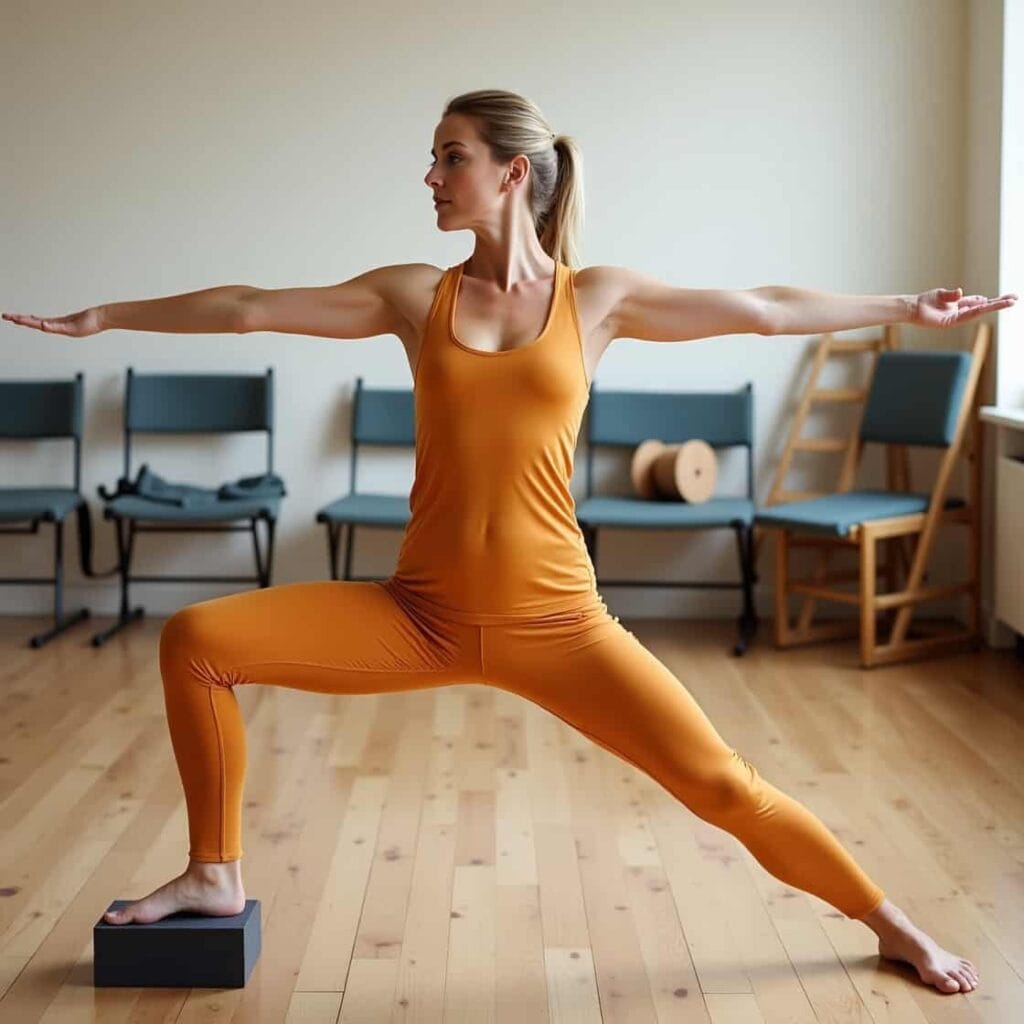
- Supta Baddha Konasana (Reclining Bound Angle): The “I’m not napping, I’m restorative-ing!” pose. Bolsters turn it into a cloud-like hip-opener (snoring optional).
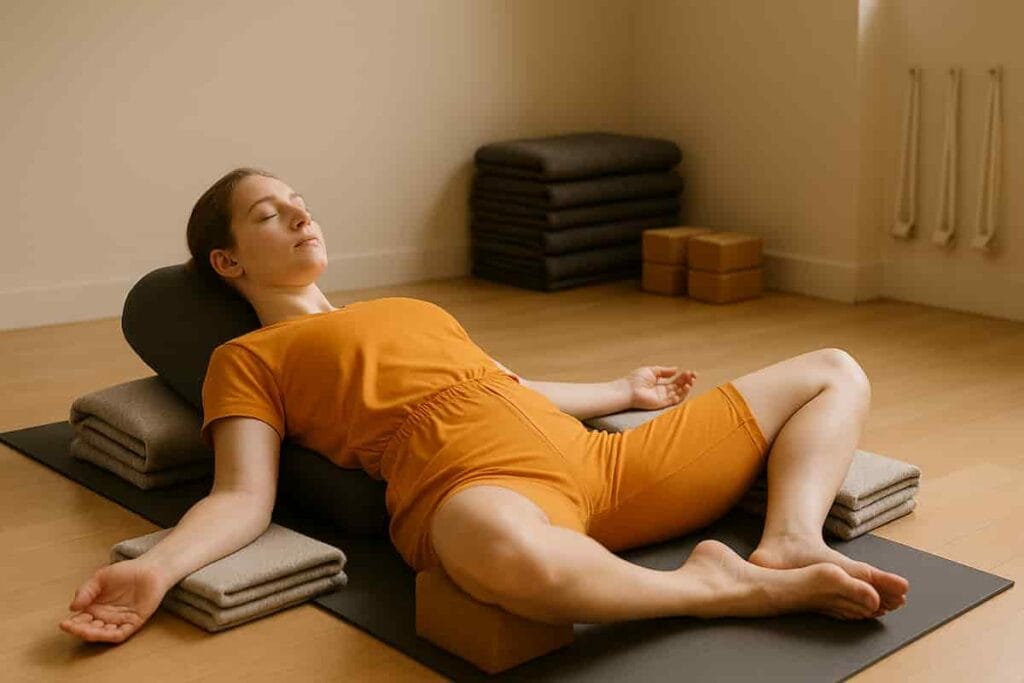
- Salamba Sarvangasana (Shoulderstand): The “why is my neck crunching?!” classic. Folded blankets and chairs turn you into a supported, happy inverted turtle.
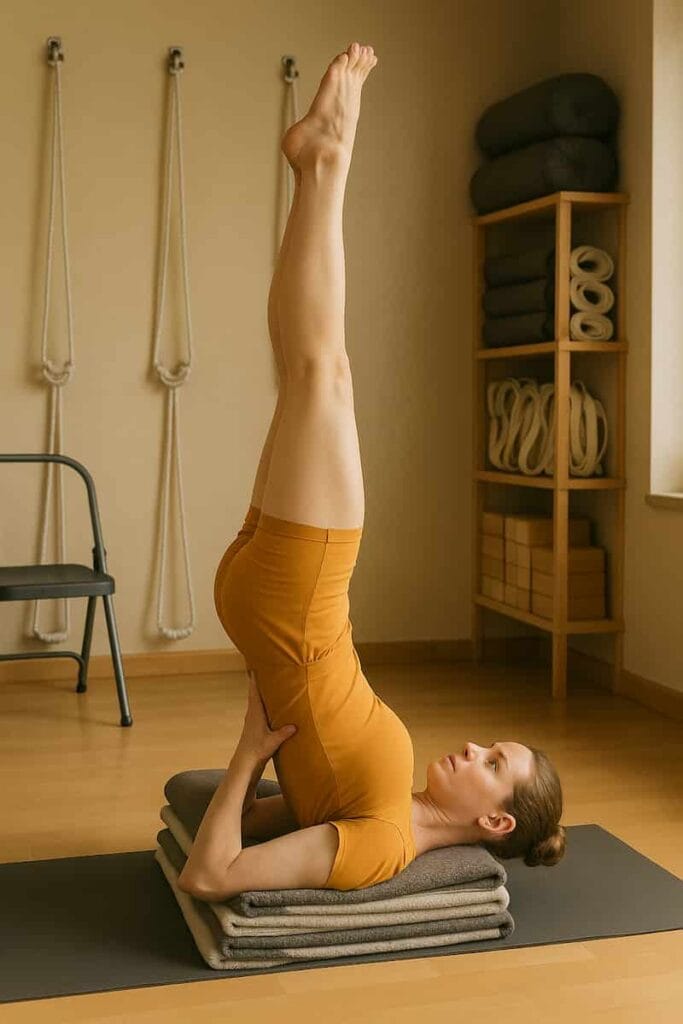
The best part? No pose is “one-size-fits-all”. Blocks catch you, straps extend you, and walls stop you from faceplanting. It’s like yoga with training wheels—dignity fully intact.
Iyengar Yoga for Beginners: Where “I Can’t” Goes to Die
Let’s bust the myth: Iyengar Yoga isn’t just for human pretzels. It’s actually perfect for newbies—because who wants to flail around like a confused octopus? Here’s why it rocks for rookies:
- Slow & Steady Wins the Race: No frantic vinyasa flows here. You’ll learn poses so thoroughly, you could teach them to your goldfish.
- Grandma-Approved: Great for all ages and creaky joints. (Your future flexible self will high-five you.)
- No “Suffer in Silence”: Teachers actually help instead of just chanting “find your edge” while you panic.
Newbie Survival Kit:
- Clothes: Stretchy = good. Jeans = why punish yourself?
- Flexibility: Don’t have any? Perfect. That’s what props (and time) are for.
- First Class: Pick a beginner session—unless you enjoy feeling like a walrus in ballet.
Bottom line: It’s yoga without the intimidation. And hey, if you can breathe, you’re already winning.
Iyengar Yoga vs. Other Styles: Pick Your Flavor
Let’s settle the yoga debate—not all styles are created equal. Here’s the no-BS breakdown:
| Feature | Iyengar Yoga | Vinyasa Yoga | Hatha Yoga |
|---|---|---|---|
| Pace | “Let’s dissect this pose for 10 minutes” | “Sweat now, questions never” | “Not fast, not slow… just zen” |
| Focus | Alignment (your spine will thank you) | Breath-to-movement (aka choreographed panting) | A bit of both (the Goldilocks option) |
| Best For | Beginners, injury rehab, perfectionists | Cardio lovers, people who miss gym burpees | Chill seekers, weekend warriors |
Why Iyengar Wins for Some:
- No rushing = actually learning instead of just surviving
- Props = no “fake it till you make it” nonsense
- Therapeutic = your creaky knees get a vote
The Verdict: Want a workout? Try Vinyasa. Want to unwind? Hatha’s your pal. But if you’re tired of guessing your way through poses, Iyengar Yoga is the “let’s do this right” hero. Mic drop.
Final Thoughts: Is Iyengar Right for You?
Here’s the deal: Iyengar Yoga isn’t some magic pill—but honestly, it might be the next best thing. Especially if you’ve ever caught yourself thinking:
- “Why does my ‘mountain pose’ look more like a ‘leaning tower’?”
- “Wait—we’re supposed to breathe during this?!”
- “Can yoga actually fix my posture, or is that just hype?”
Here’s why it could be your perfect fit:
First off, it’s brilliant if you like clear instructions (not just “follow your energy, man”).
Plus, you’ll finally understand poses instead of just faking them.
And hey, if your body has a history (old injuries, stiff joints, etc.), this style actually adapts to you.
But let’s be real—it’s not for everyone:
On one hand, it’s not a quick calorie burner—more like “whoa, my hips haven’t moved like this since 1998.”
On the other hand, you will need patience (and maybe a no-nonsense teacher to stop your “creative interpretations” of poses).
So what’s the verdict?
If you’re done with winging it and ready for real progress, Iyengar Yoga could be your game-changer. Otherwise, well… at least you’ll finally touch your toes. Probably
FAQs About Iyengar
Q1: “I am a complete novice. Shall I stare without knowing?”
Absolutely not! This is the kindergarten of yoga—slow, super clear, and no one expects you to twist like a pretzel. Even your grandma could start today.
Q2: “I’m about as flexible as a brick. Is that okay?”
Here’s the beautiful part – the stiffer you are, the more you’ll benefit! Those props aren’t just decorations – they’re your personal flexibility assistants. Before you know it, you’ll be reaching places you forgot existed.
Q3: “How often should I practice to see results?”
Start with 2-3 times a week, but here’s the catch – consistency beats marathon sessions. It’s like brushing your teeth; little and often works better than one heroic 3-hour scrub.
Q4: “What makes this different from regular yoga?”
While other styles might have you flowing around, Iyengar is all about the details. Imagine the difference between speed-reading a novel and analyzing Shakespeare – both have value, but one definitely gives you better posture.
Q5: “Can I practice in my living room without looking silly?”
Absolutely! In fact, some of the best practice happens at home when no one’s watching you negotiate with a stubborn strap. Just clear some space, maybe warn the cat, and you’re golden.
Final thought: Whether you’re young, old, bendy, or stiff, Iyengar Yoga meets you where you are. Now – who’s ready to stop wondering and start doing? Your future more-awesome self says thanks in advance
Recommended Reads:
🔗 Love mindful living? Follow us on Pinterest and LinkedIn for daily meditation tips, peaceful visuals, and more




